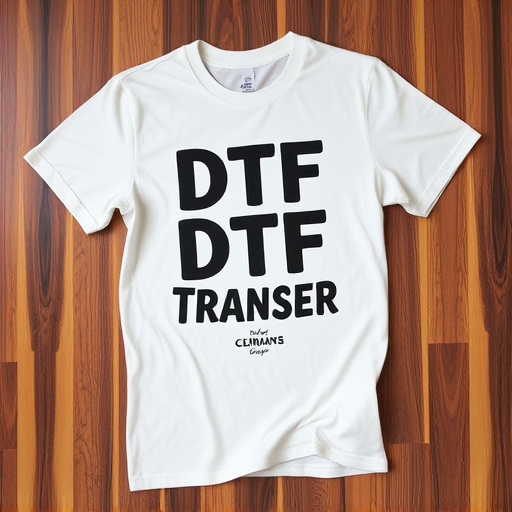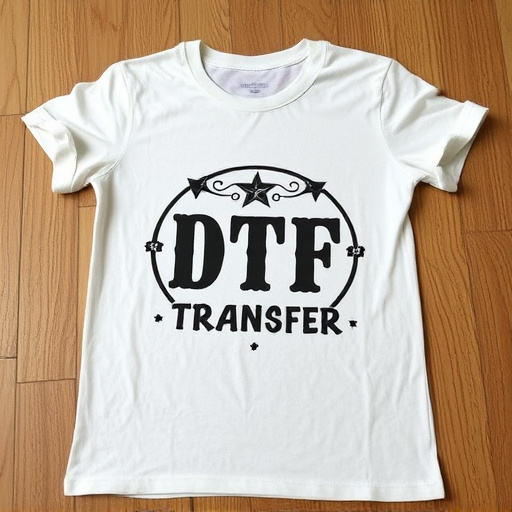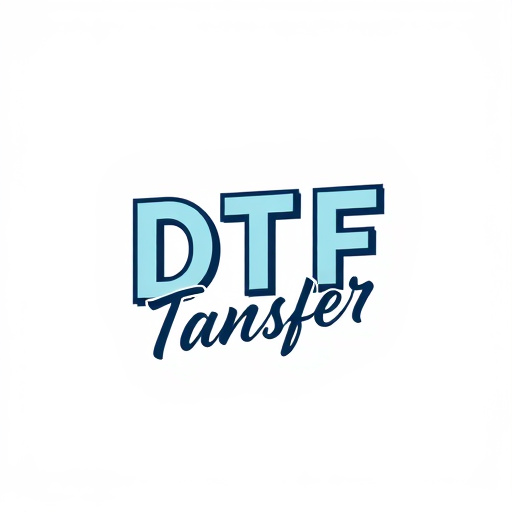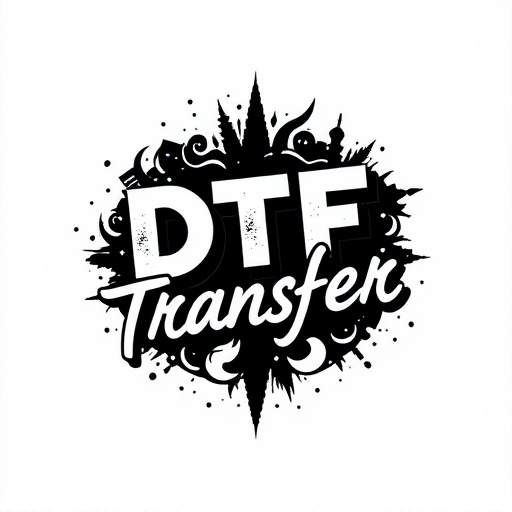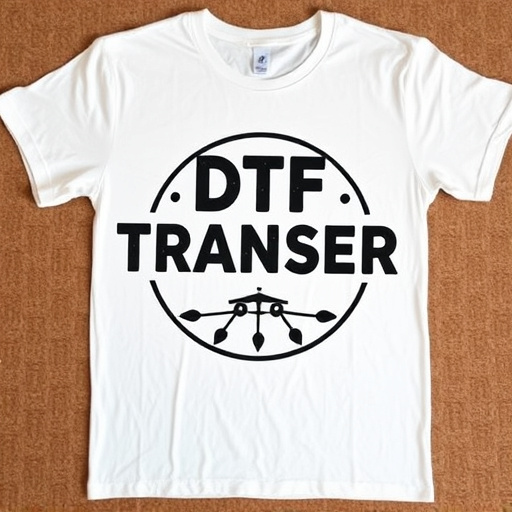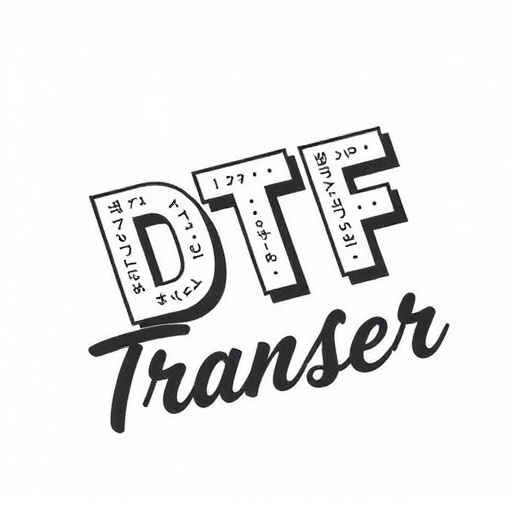Direct-to-Film (DTF) transfer is a cutting-edge printing method that allows for direct application of designs onto various surfaces, from fabrics to metals. Its popularity across fashion, signage, automotive, and home decor industries stems from its on-demand customization capabilities. Choosing the right fabric and surface preparation techniques is crucial for achieving optimal DTF results; natural fabrics like cotton offer breathability but may shrink, while synthetics provide durability and fade resistance. Advanced materials, such as high-performance polymers and specialized coatings, are enhancing DTF transfer's capabilities, expanding its applications in areas like packaging and wearable technology. Global case studies demonstrate successful implementations of DTF transfer across retail, signage, and outdoor advertising, showcasing its versatility and transformative potential.
“Direct-to-film (DTF) transfer printing is a cutting-edge technology revolutionizing the way we apply graphics and designs. This article delves into the intricacies of optimal fabrics and surfaces for DTF applications, offering a comprehensive guide for professionals. From understanding the fundamentals of DTF transfer to exploring advanced materials, we cover key factors crucial for successful implementation. Learn about surface preparation techniques, common fabric types, and inspiring case studies that showcase the versatility and longevity of this game-changing technology.”
- Understanding Direct-to-Film (DTF) Transfer: A Brief Overview
- Key Factors in Choosing Optimal Fabrics for DTF Printing
- Surface Preparation: Ensuring Top-Notch Adhesion for Longevity
- Common Fabric Types and Their Suitability for DTF Applications
- Advanced Materials: Pushing the Boundaries of DTF Technology
- Case Studies: Successful Implementation of DTF Transfer on Various Surfaces
Understanding Direct-to-Film (DTF) Transfer: A Brief Overview
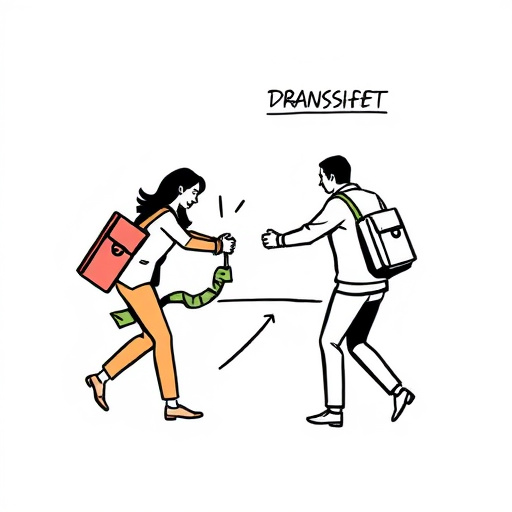
Direct-to-Film (DTF) transfer is a cutting-edge printing technique that allows for the application of designs and graphics directly onto various surfaces without the need for intermediate materials. This method has revolutionized the way we adorn and customize objects, offering unparalleled precision and versatility. The process involves precisely transferring ink or coating from a print head to a substrate, enabling the creation of high-resolution, vibrant prints on diverse materials, including fabrics, plastics, metals, and more.
DTF technology provides a direct and efficient means of applying patterns, logos, or artwork, ensuring a seamless integration of design and surface. It is widely used in industries such as fashion, signage, automotive, and even home decor, where the ability to print on-demand and customize products quickly has proven invaluable. Understanding DTF transfer’s capabilities and limitations is essential for selecting the optimal fabrics and surfaces for achieving the desired aesthetic and functional outcomes.
Key Factors in Choosing Optimal Fabrics for DTF Printing

When selecting fabrics for direct-to-film (DTF) printing, several key factors come into play to ensure optimal results. The choice of fabric is critical as it dictates the overall quality and longevity of the DTF transfer. Smooth, flat surfaces are ideal, allowing ink to adhere evenly, leading to crisp and precise prints. Natural fabrics like cotton and linen are popular for their breathability and ability to accept ink readily. However, synthetic materials also have their place, offering advantages such as durability and resistance to fading, making them suitable for outdoor applications.
Texture plays a significant role; while a smooth fabric ensures even ink distribution, certain textured surfaces can add depth and interest to designs. The porosity of the fabric is another consideration; highly porous materials allow ink to penetrate deeply, resulting in vibrant colors and excellent print clarity. Moreover, the stretch and flexibility of the fabric should be evaluated to prevent warping or cracking during the printing process and subsequent use.
Surface Preparation: Ensuring Top-Notch Adhesion for Longevity
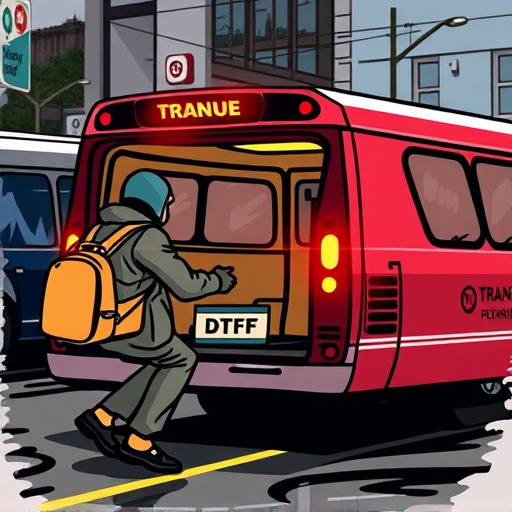
Surface preparation is a critical step in achieving optimal results with Direct-to-Film (DTF) transfers, ensuring long-lasting adhesion and vibrant finishes. Before applying any film, it’s essential to clean and activate the surface to create a strong bond between the substrate and the graphic. This process involves removing contaminants like dust, grease, or existing residues that might hinder adhesion.
For various materials, specific techniques apply; for example, roughening smooth surfaces slightly can increase friction points for better grip. Primers and activators are also valuable tools to enhance surface energy, especially on delicate fabrics or challenging substrates. Proper preparation ensures that the DTF transfer not only sticks securely but also withstands environmental factors, including sunlight exposure and hand washing, without peeling or fading over time.
Common Fabric Types and Their Suitability for DTF Applications

Direct-to-film (DTF) applications require fabrics and surfaces that offer both exceptional printability and durability. Common fabric types include cotton, polyester, and their blends, which are popular choices due to their versatility and ability to withstand various printing techniques. Cotton, in particular, is favored for its soft texture and breathability, making it suitable for apparel and promotional items. However, pure cotton may not always be the best option for DTF transfers as it can be prone to shrinking or wrinkling.
Polyester fabrics, on the other hand, offer superior dimensional stability and resistance to fading, making them ideal for outdoor applications and items intended for prolonged use. Blends of cotton and polyester combine the benefits of both materials, providing a balance between comfort and durability. When selecting fabrics for DTF applications, it’s crucial to consider factors like thread count, weight, and finish to ensure optimal print results and long-lasting performance.
Advanced Materials: Pushing the Boundaries of DTF Technology
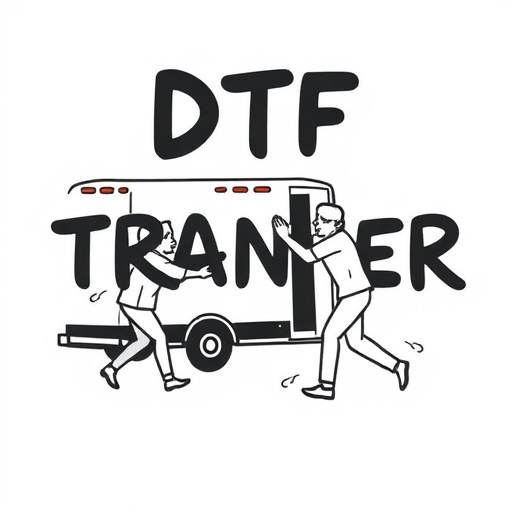
Direct-to-film (DTF) technology continues to evolve as manufacturers seek materials that offer enhanced performance and quality for their printing processes. Advanced materials play a crucial role in pushing the boundaries of DTF transfer, enabling more intricate designs, superior durability, and an expanded range of applications. Researchers and developers are constantly exploring innovative options, such as high-performance polymers and specialized coatings, to meet the growing demands of the industry.
These cutting-edge materials provide unique advantages, including improved adhesive strength, enhanced resistance to environmental factors, and better compatibility with various inks and substrates. For instance, flexible polymer films with advanced adhesion technologies allow for seamless application on curved surfaces, expanding the possibilities for creative designs in packaging, signage, and even wearable technology. This continuous pursuit of advanced materials promises to further revolutionize DTF printing, opening up new avenues for visual communication and product customization.
Case Studies: Successful Implementation of DTF Transfer on Various Surfaces

Direct-to-film (DTF) transfer has gained significant traction in various industries due to its versatility and ability to create high-quality, durable prints on diverse surfaces. Case studies from around the globe highlight successful implementations of DTF technology across different sectors. For instance, in retail, DTF transfers have been used to produce vibrant, detailed clothing designs, transforming plain garments into eye-catching fashion pieces. This method has proven particularly effective for small batch production and custom apparel, allowing brands to quickly adapt to changing trends and consumer preferences.
Another notable application is in the signage industry. Outdoor advertising companies have adopted DTF technology to create visually stunning, long-lasting signs and banners. By printing directly onto various materials like vinyl, polyester, and even wood, DTF transfers offer a cost-effective alternative to traditional methods, resulting in superior visual impact and enhanced durability. These case studies demonstrate the adaptability and effectiveness of DTF transfer as a game-changer across multiple sectors, setting new standards for print quality and surface compatibility.







